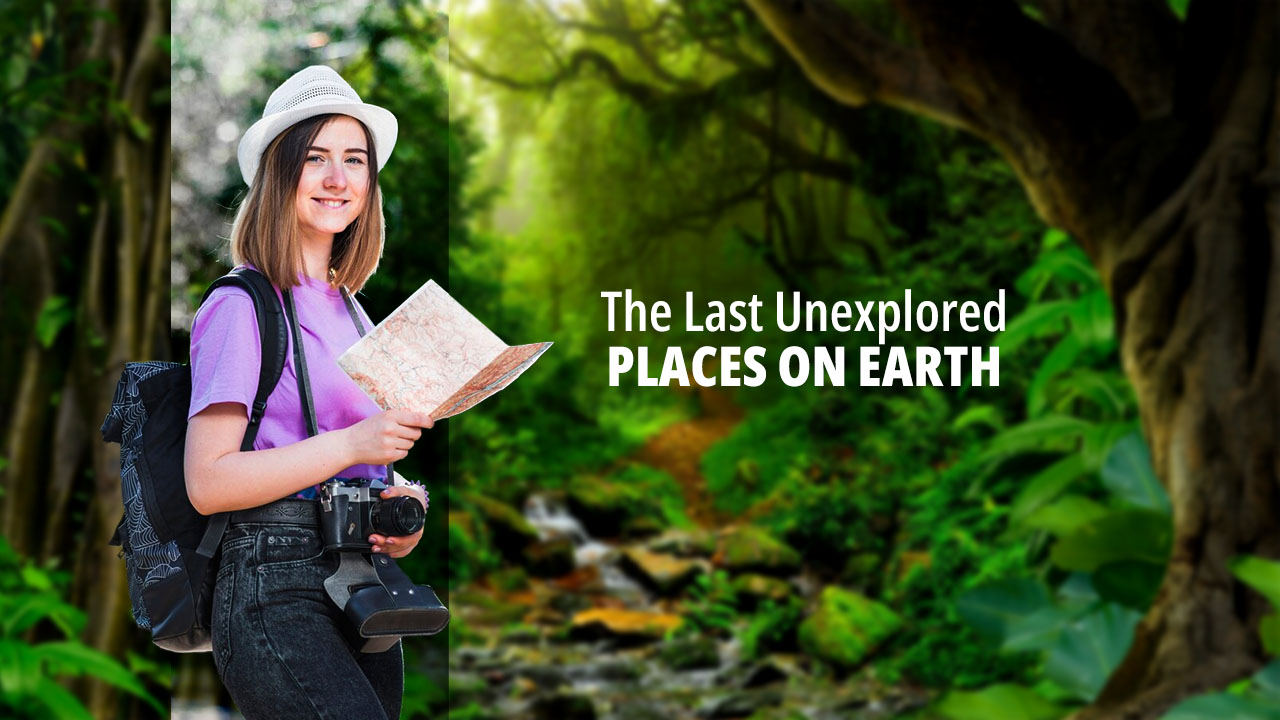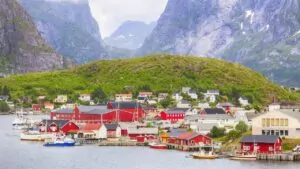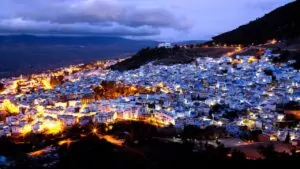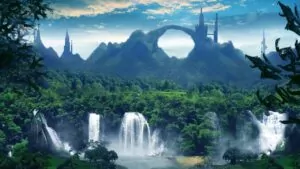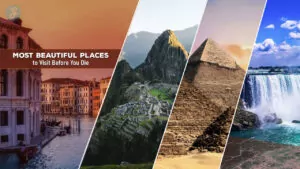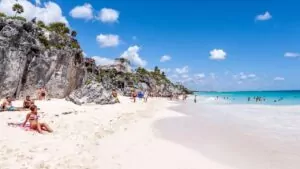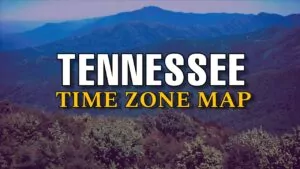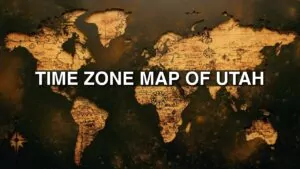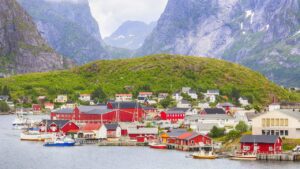Our planet, Earth, is full of wonders. We’ve climbed the highest mountains and sailed across vast oceans. But believe it or not, there are still places on Earth that humans haven’t fully explored. These hidden corners of our world spark our curiosity and fuel our desire to discover.
For thousands of years, humans have been explorers. We’ve mapped continents, crossed deserts, and even reached the moon. But our journey of discovery isn’t over. Some places on Earth remain mysterious and unexplored.
Why do these unexplored places still exist? Sometimes, it’s because they’re difficult to reach. Other times, it’s because the conditions are too extreme for humans. And in some cases, we simply haven’t had the right tools to explore them until now.
In this article, we’ll take a journey to some of the last unexplored places on Earth. We’ll dive into deep oceans, trek through dense jungles, and venture into icy polar regions. We’ll also look at the challenges explorers face and the new methods they use to uncover Earth’s secrets.
Deep Oceans
-
Mariana Trench
The Mariana Trench is the deepest known part of the Earth’s oceans. It’s located in the western Pacific Ocean, east of the Mariana Islands. The trench is about 1,580 miles (2,550 kilometers) long and 43 miles (69 kilometers) wide.
The Challenger Deep is the deepest section of the Mariana Trench. It reaches a depth of about 36,070 feet (10,994 meters) below sea level. To put this in perspective, if you placed Mount Everest at the bottom of the Challenger Deep, its peak would still be more than a mile underwater!
Only a handful of people have ever visited the bottom of the Challenger Deep. The extreme pressure at this depth makes exploration very difficult. The pressure at the bottom of the trench is more than 1,000 times greater than at sea level.
Despite these challenges, scientists are eager to explore the Mariana Trench. They believe it could be home to unique life forms that have adapted to the extreme conditions.
-
Hydrothermal Vents
Hydrothermal vents are like underwater hot springs. They form when seawater seeps into cracks in the ocean floor near volcanic areas. Magma beneath the Earth’s crust superheats the water, which then shoots back up through the ocean floor, carrying minerals with it.
Scientists were first amazed by these vents when they discovered them in 1977. Despite the extreme conditions—no sunlight, intense pressure, and temperatures that can reach over 700°F (371°C)—the areas around hydrothermal vents are teeming with life.
Many hydrothermal vent fields remain unexplored because they’re difficult to reach. Usually, scientists find them in very deep water, often more than a mile below the surface. Scientists use special submarines and robots to study these unique ecosystems.
-
Unexplored marine life
The ocean covers more than 70% of Earth’s surface, but we’ve only explored about 5% of it in detail. This means there’s a lot we don’t know about what lives in the sea.
Scientists estimate that there could be anywhere from 700,000 to 1 million species living in the ocean. But we’ve only identified about 226,000 of them. That means there could be hundreds of thousands of sea creatures we haven’t discovered yet!
Every year, scientists find new species in the ocean. In 2020, researchers discovered 12 new deep-sea creatures in the Atlantic Ocean. These included sea mosses, mollusks, and coral. One of the most exciting finds was a new species of Eurythenes, a type of amphipod or shrimp-like creature that can grow up to 20 centimeters long.
Dense Jungles
-
Amazon Rainforest
The Amazon Rainforest is the world’s largest tropical rainforest. It covers about 2.1 million square miles (5.5 million square kilometers) across several countries in South America. That’s about 40% of the continent!
The Amazon remains largely unexplored, despite its vast size. The forest is so dense that it’s difficult to travel through on foot. It’s also home to many dangerous animals and insects.
In 2019, scientists used satellite images to discover 11 new species of trees in the Amazon. These trees, standing over 30 meters tall, remain unidentified. This shows that even in areas we think we know well, there are still new things to discover.
The Amazon is also home to uncontacted tribes—groups of people who have little or no interaction with the outside world. Experts believe there are about 100 uncontacted tribes living in the Amazon rainforest.
-
Congo Basin
The Congo Basin in Central Africa is home to the world’s second-largest rainforest, after the Amazon. It covers about 695,000 square miles (1.8 million square kilometers) across six countries.
Like the Amazon, parts of the Congo Basin remain unexplored due to its dense vegetation and remote location. The forest is home to many unique animals, including gorillas, chimpanzees, and okapi (a relative of the giraffe that looks a bit like a zebra).
In 2020, scientists discovered a new species of monkey in the Congo Basin. Only about 200 Popa langur monkeys remain in the wild. Discoveries like this show how much we still have to learn about the animals living in these dense forests.
-
Papua New Guinea
Papua New Guinea is an island country in the southwestern Pacific Ocean. Tropical rainforest covers about 85% of the country, much of which remains unexplored.
The country’s rugged terrain and dense forests make it difficult to travel through. Some areas are so remote that different villages have developed their own languages. Papua New Guinea is one of the most linguistically diverse countries in the world, with over 800 indigenous languages!
In 2017, an expedition to Papua New Guinea’s Foja Mountains discovered more than 50 new species. These included two new mammals, three new frogs, and dozens of new insects.
Polar Regions
-
Parts of Antarctica
Antarctica is the coldest, windiest, and driest continent on Earth. In some places, the ice covers Antarctica up to 3 miles (4.8 kilometers) thick. Because of these extreme conditions, large parts of Antarctica remain unexplored.
One of the least-explored areas is the Gamburtsev Mountain Range. The ice sheet completely encases these mountains. Scientists only discovered them in the 1950s using seismic surveys. We still don’t know much about what these mountains look like or how they formed.
Another mysterious feature of Antarctica is its subglacial lakes. These are the lakes that exist beneath the ice sheet. Lake Vostok is the largest of these, about as big as Lake Ontario. Scientists have drilled into some of these lakes, but many remain unexplored.
-
Arctic Seabed
The Arctic Ocean is the smallest and shallowest of the world’s oceans. Sea ice covers much of the Arctic Ocean, making exploration challenging. However, as climate change causes this ice to melt, more of the Arctic seabed becomes accessible.
One of the least explored parts of the Arctic is the Gakkel Ridge. This is an underwater mountain range that stretches for about 1,100 miles (1,800 kilometers) across the Arctic Ocean. In 2003, scientists exploring the Gakkel Ridge discovered several new species of marine life, including new types of fish and shrimp.
The Arctic seabed might also hold clues about Earth’s history. In 2004, researchers found fossils of a tropical forest on the Arctic seafloor. These 56-million-year-old fossils suggest that the Arctic was once much warmer than it is today.
Cave Systems
-
Son Doong Cave, Vietnam
Son Doong Cave in Vietnam is the world’s largest known cave passage in terms of volume. Only in 1991 did researchers discover it, and they didn’t fully explore it until 2009. The main cavity is more than 3 miles (5 kilometers) long, 660 feet (200 meters) high, and 490 feet (150 meters) wide.
The cave is so big that it has its own weather system. Clouds form inside the cave, and it even has its own jungle, nicknamed the ‘Garden of Edam’. Scientists believe there may be parts of Son Doong that are still unexplored, including underwater passages.
-
Krubera Cave, Georgia
Krubera Cave, also known as Voronya Cave, is the deepest known cave on Earth. It’s located in the Arabika Massif of the Gagra Range in Abkhazia, Georgia. The cave extends for at least 7,185 feet (2,190 meters) below the surface.
Exploring Krubera Cave is extremely challenging. The temperature inside is always cold, around 2°C (36°F). There are many narrow passages and vertical drops. Explorers have to use special breathing equipment in the deepest parts of the cave because of the high humidity and lack of air circulation.
Scientists anticipate the discovery of even deeper caves. Some think it might be possible to find a cave that reaches a depth of 3,000 meters or more.
Remote Islands
-
Sentinel Island, India
North Sentinel Island is part of the Andaman Islands in the Bay of Bengal. It’s home to the Sentinelese people, who are known for their vigorous rejection of contact with the outside world. The island and its people remain largely unknown and unstudied.
The Indian government has made it illegal to approach within 3 nautical miles of the island. This is to protect the Sentinelese from diseases to which they have no immunity and to respect their wish for isolation.
We know very little about the Sentinelese way of life, their language, or their history. Anthropologists estimate that they’ve lived on the island for 60,000 years, but this is largely guesswork.
-
Bouvet Island, Norway
Bouvet Island is often called the most remote island in the world. It’s a small, uninhabited volcanic island in the South Atlantic Ocean. The nearest land is the coast of Antarctica, more than 1,000 miles (1,600 kilometers) away.
A glacier covers the island almost entirely. Its harsh climate and remote location make it very difficult to explore. In fact, more than 100 years after its discovery, 1927 marked the first recorded landing on the island.
Bouvet Island is a nature reserve and an important breeding ground for seabirds, seals, and penguins. But because it’s difficult to reach, scientists have only been able to study its ecosystem in limited ways.
High Mountains
-
Unexplored Peaks in the Himalayas
The Himalayas are home to the world’s highest mountains, including Mount Everest. But even in this well-known mountain range, there are still peaks that remain unclimbed and largely unexplored.
Gangkhar Puensum, for example, is in Bhutan. At 24,836 feet (7,570 meters), it’s the highest unclimbed mountain in the world. Climbing has been off-limits since 1994, when Bhutan banned all mountaineering on peaks higher than 6,000 meters out of respect for local spiritual beliefs.
Simply because their taller neighbors overshadow them, many smaller peaks in the Himalayas remain unclimbed. These mountains could hold surprises for future explorers.
-
Unclimbed mountains in Antarctica
Antarctica boasts numerous mountains that remain unclimbed. The continent’s extreme weather and remote location make these peaks incredibly challenging to reach and climb.
One famous unclimbed peak is Mount Sidley, the highest volcano in Antarctica. It’s 14,058 feet (4,285 meters) tall. While people have flown over it and landed nearby, no one has ever reached its summit.
Scientists are interested in these unclimbed mountains because they could provide valuable information about Antarctica’s geology and past climate. However, the difficulties of exploring them mean that many of these peaks remain mysteries.
Challenges of Exploration
-
Environmental Factors
Exploring the last unknown places on Earth comes with many challenges. Extreme temperatures, whether hot or cold, can make it difficult for humans and equipment to function. In the deep ocean, the immense pressure can crush most submarines. In dense jungles, the heat and humidity can lead to equipment failure and health issues for explorers.
The weather is another major factor. Storms in the open ocean can be deadly. Avalanches and sudden storms in high mountains can trap climbers. In polar regions, blizzards can last for days, making exploration impossible.
-
Political Barriers
Sometimes, the barriers to exploration are human-made. Some countries restrict access to certain areas for political or security reasons. For example, North Korea severely limits where foreigners can go within its borders.
In other cases, disputed territories can make exploration difficult or dangerous. There are still areas where the exact border between countries is unclear, and exploring these regions could lead to international incidents.
-
Technological Limitations
While technology has made exploration easier in many ways, we still face limitations. For instance, our deepest-diving submarines can only reach about half the depth of the Mariana Trench. We don’t have the technology to explore the deepest oceans as thoroughly as the surface.
In space exploration, we face similar challenges. While we can see distant planets with telescopes, we don’t yet have the technology to send humans to explore them directly.
Modern Exploration Methods
-
Satellite Imaging
Satellites have revolutionized how we explore Earth. They can take detailed images of almost any place on the planet’s surface. This helps scientists discover new geographic features and track changes over time.
For example, in 2019, satellite images helped researchers discover an unknown island off the coast of Antarctica. Climate change revealed the island, unofficially named Sif Island, when the glacier covering it melted.
-
Underwater Robots
Robotic submersibles, often called ROVs (Remotely Operated Vehicles) or AUVs (Autonomous Underwater Vehicles), are crucial for exploring the deep ocean. These robots can go deeper and stay underwater longer than any human diver.
In 2021, an ROV called Limiting Factor reached the deepest known point of the Mariana Trench. It took detailed photos and collected samples from the seafloor, helping scientists learn more about this extreme environment.
-
LiDAR Technology
LiDAR (Light Detection and Ranging) uses lasers to create detailed 3D maps of an area. It’s especially useful for seeing through dense vegetation, which makes it valuable for exploring jungles and forests.
In 2018, LiDAR technology helped archaeologists discover over 60,000 previously unknown Mayan structures hidden beneath the jungle canopy in Guatemala. This technology is changing our understanding of ancient civilizations and helping us explore places we thought we already knew.
Conclusion
Even in the 21st century, Earth still holds many mysteries. From the depths of the oceans to the peaks of remote mountains, there are places humans have yet to fully explore. These unexplored areas are important not just for the thrill of discovery but also for the scientific knowledge they might hold.
As technology improves, we’re able to reach and study places that were once inaccessible. But exploration isn’t just about having the right tools. It also requires curiosity, perseverance, and a willingness to push beyond known boundaries.
The existence of these unexplored places reminds us that our planet is vast and complex. There’s still so much to learn about the world we live in. As we continue to explore these last unknown places, we’ll undoubtedly uncover new wonders and gain a deeper understanding of our Earth.
Every new discovery has the potential to change how we see the world. It might reveal new species, provide insights into Earth’s history, or help us understand how to better protect our planet. The age of exploration is far from over—in many ways, it’s just beginning.

